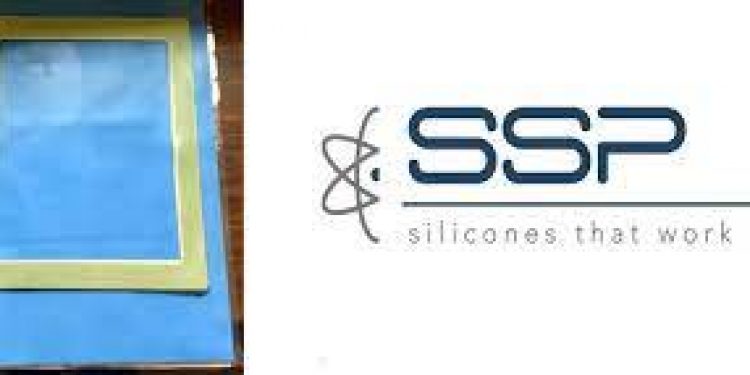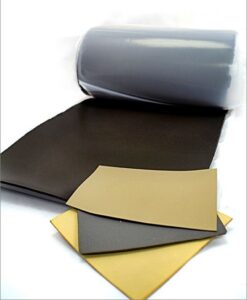Bonded EMI frame gaskets are made from electrically-conductive silicone sheets that are cut into strips and then bonded together at their edges with an electrically-conductive adhesive. The entire EMI gasket resembles a picture frame with four flat sides and an open area in the middle. Whether the finished gasket is square or rectangular, the corners need strong, reliable bonds so that the entire EMI gasket provides environmental sealing and shielding against electromagnetic interference.
Today, EMI frame gaskets of all sizes are used with electronic enclosures. Some of these enclosures are relatively small, but others (such as military radars) are quite large. That’s a problem for gasket fabricators who use stock EMI sheets that are just 15-in. x 20-in. Fabricators want to avoid splicing the sides of an EMI frame gasket together, and not just because of the added labor costs involved. Additional splices can raise the risk of EMI leakage, and the joints at the four corners may already be a cause for concern.
Continuous rolls in custom sizes can eliminate the need for side-splicing, but why not just cut out the entire gasket instead? Cutting out the middle of a large frame gasket can eliminate the need for corner bonding, but at the expense of discarding the material in the middle of the frame. Whether the cut-out is made from a continuous roll or a sheet material, this material waste can add up to a significant expense across a large number of gaskets.
Molded EMI frame gaskets offer an alternative, and they don’t require side-splicing and corner bonding. Still, there’s a practical limit to the size of a mold. In part, that’s because molding requires custom tooling. Larger molds use more metal and need more production time, which makes them more expensive to produce. They’re economically impractical at lower gasket volumes, and all molds take time to make.
For large EMI frame gaskets, continuous rolls and cut-and-bonded lengths can provide the answer – if a fabricator can address three key concerns. First, there’s a risk of EMI leakage at a gasket’s corners if a non-conductive adhesive is used. Second, corner bonds won’t withstand the same temperatures as the gasket material if a non-silicone adhesive is applied. Third, non-silicone products such as acrylic glues dry to a much harder durometer and can leave a “hard spot” that affects a gasket’s compressibility.
Specialty Silicone Products (SSP) produces EMI silicones in continuous rolls and can address these and other challenges. Because we mix and manufacture our own materials, we can produce custom rolls in larger sizes along with stock sheets. Importantly, SSP uses a proprietary bonding process and adhesive that reduces the risk of EMI leakage, temperature-related problems, and the creation of an unwanted “hard spot” in the corners of large EMI frame gaskets.
Bonded EMI frame gaskets are also cost-effective produce. Consider the example of a mold for a large gasket that costs $5000 and takes eight weeks to make. Prototypes are made according to the part drawing, but there’s a problem during fit testing. Because the buyer needs the parts soon, a rush order is submitted for a new $7500 mold that another four weeks to produce. Along with 12 weeks of lost time, the project now faces tooling costs of $12,000 before gaskets even enter production.
Because SSP makes EMI rolls at our Ballston Spa, New York (USA) facility, we can use materials that we keep in stock or need just days or weeks to produce. The fixturing that SSP uses for bonded gaskets costs significantly less than a metal mold, and our proprietary bonding process and adhesive delivers dependable results. If you need large EMI frame gaskets for applications like military radars, SSP has what you need, including specification-grade silicones.
Contact SSP online or email Dominic Testo, SSP’s Business Development Manager.





